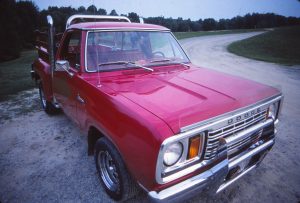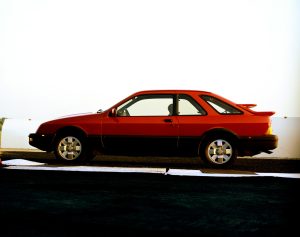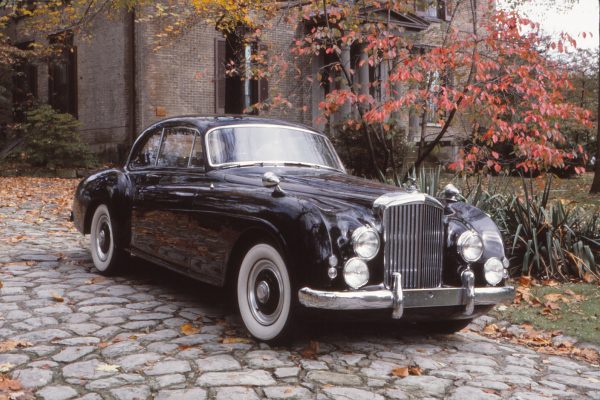Review originally published in Road & Track Sport-Utilities Pickups & Vans Buyer’s Guide 1993; republished by the author.
With all the hoopla surrounding Ford’s Explorer over the past couple of years, it would be easy to miss Ford’s venerable four-size sport-utility. On the other hand, enough buyers have remembered the Bronco to make it America’s number-one selling full-size sport-ute for the past 13 years in a row.
Big as it is, there’s no hiding what the Bronco is. It’s a truck, a big, rugged piece of equipment that hides neither origin or temperament. Weighing in at over 4500 lb, it stands more than 6 ft tall. It comes only in four-wheel drive, with two doors only, and rides, well, like a truck. And Bronco buyers certainly wouldn’t have it any other way.
Bronco shoppers have their way with trim, too, from base-level Custom to XLT to plush Eddie Bauer, which includes captain’s chairs for front seating, with optional leather front and rear.
However outfitted, the Bronco is a big, macho four-wheeler, available this year with V-8 power only. The 185-bhp 5.0-liter is standard equipment, the 200-bhp 5.8-liter V-8 optional, requiring the electronic four-speed automatic overdrive transmission. The auto shifter is optional with the smaller V-8 as well, replacing the standard five-speed overdrive manual transmission.
Ford’s push-button-controlled transfer case is optional on premium models, eliminating the floor-mounted lever for engaging low range and four-wheel drive and allowing shift-on-the-fly in and out of 4wd. Automatic-locking hubs are standard across the board, though manual-locking hubs are optional on the Custom and XLT for those wanting to get out and switch by hand.
Based on the Ford F-Series pickup chassis, the Bronco should have Ford’s Twin-Traction Beam front suspension and does. At the rear there’s a live axle on leaf springs; a trailer-towing option includes a rear anti-roll bar (to supplement the standard front bar) and quad front and heavy-duty rear shock absorbers, as well as a trailer-wiring harness, heavy-duty flashers and extra engine cooling. The Bronco has a maximum towing capacity of 6600 lb.
New features for 1993 include a four-wheel anti-lock braking system and “next-generation” cruise control. The brake system, with discs up front and drum brakes rear, is a significant safety improvement over last year’s rear-wheel-only ABS. Though ABS on the rear wheels prevents pirouettes caused by typically lightly loaded rear wheels locking on slippery surfaces, rear-only ABS still could find a driver sliding relentlessly head-on, front wheels locked and unsteerable, into whatever was in the way. The new four-wheel ABS corrects that.
The new speed control, as on the F-series pickups, is faster-responding and holds speed better than the previous system. It also “taps up” and “taps down” in one-mph increments.
Lest all this make the Bronco seem too gentle, don’t forget the Bronco’s size. There is a giant step up into the cab, and Ford doesn’t help with niceties like grab handles. The backseat requires the moves of a gymnast to enter. That elevation above the road, however, provides a panoramic view over traffic, as well as the security of knowing you’re in one of the toughest tough guys in the alley.
The Bronco is remarkably spacious inside, as well, with plenty of room for three adults across the backseat and the front passenger almost a time zone away from the driver. The Bronco shared in last year’s redesign of the F-Series pickup dashboard, and the instruments and controls are therefore delightfully contemporary and easy to use. The rotary controls for climate control are particularly simple and effective.
A handy feature is Ford’s “power point,” twin sockets for 12-volt electrical accessories such as cellular phones or radar detectors. There is no need to pull the cigarette lighter anymore. Neat, also, is a console with lift-out inserts in the cupholders, to accommodate oversize cups as well as soda cans.
There is lots of room in the rear for whatever stuff you carry. With the rear seat removed, there is 63.3 in lengthwise for storage, more than 100 cu ft. Even with the backseat in, half of that is still available. The luggage space can be reached by lowering the rear window, though a high lift over means the tailgate needs to be lowered for most loading, and that requires swinging they rear-mounted spare tire out of the way. Minivan convenient it isn’t. But remember, this is a full-size, off-road-worthy truck.
“Car like” won’t describe the on-the-road comfort, either. Wind, engine and tire noise are omnipresent on the highway. And as noted earlier, it rides like a truck. Most people, with lighter-duty sport-utility needs, would be happier with the Explorer. But for the toughest jobs, the toughest conditions and the toughest guys, the Bronco is the most popular way to go.
Addendum: A review explaining 12-volt power point sockets to readers, and as a replacement for cigarette lighters (remember them?), seems particularly quaint to modern sensibilities, and as is adding front ABS to the previous year’s rear-only ABS.
The base price of the 1993 Ford Bronco was $20,084, with a premium model listing at $24,775. Fuel economy with the standard engine was EPA rated at 13/17 mpg city/highway. Fortunately the Bronco had a 32 gallon fuel tank.
Original photos in the magazine by Kirk Willis. All photos here provided by Ford.














What Do You Think?
You must be logged in to post a comment.